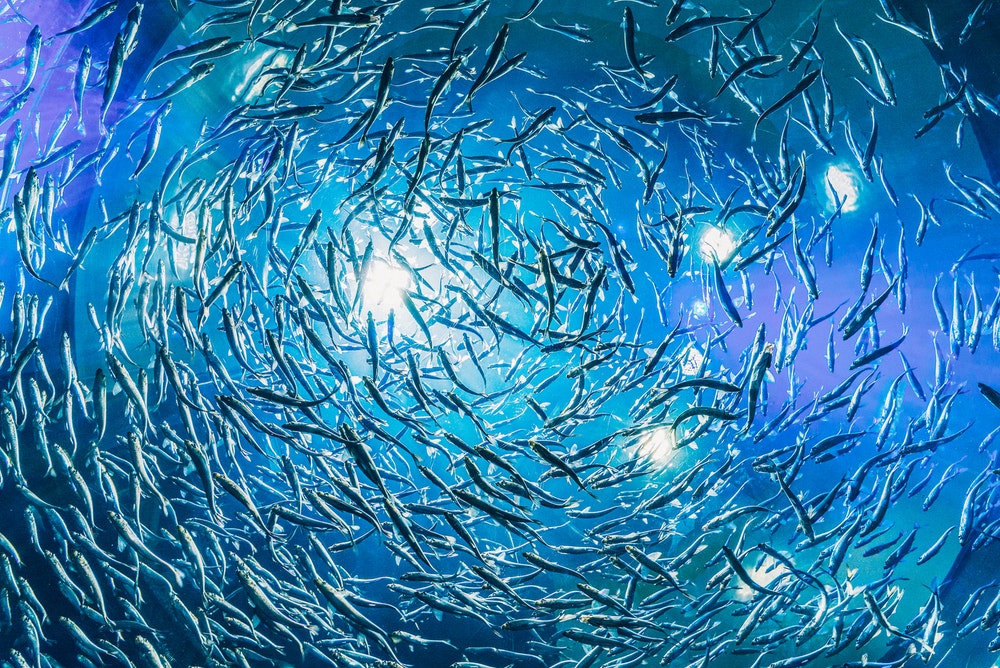Many people think that an aquarium doesn’t need to be cleaned that often. However, a dirty aquarium can cause huge problems and may lead to the premature death of your fish.
Regular maintenance of your fish tank will keep your fish happy and healthy, but how often should you clean your fish tank? Read on to find out.
What Cleaning Schedule Should You Follow?
There’s no exact rule about how often you should clean your fish tank. There are many variables to consider here, including the size of your fish tank, the number and type of fish you have, the filter system, and the surrounding environment.

Multiple schedules can be followed depending on these factors.
Daily
It’s not required to clean your fish daily, but observing the behavior of your fish and the condition of the tank day by day can help you decide whether or not the tank is being cleaned enough to keep your fish healthy.
Observe the fish for a few minutes and make sure they all look healthy and are behaving normally, with good color, clean scales, and unclamped fins. If any of your fish are dead, quickly remove them to avoid contaminating the tank.
If your fish seem stressed or are gulping for air, you need to make a partial water change, even if it’s only been a few days since the last cleaning.
Weekly
A large, properly maintained aquarium with a good filtering system may only need a water change every other week, or even once every month, but it’s good practice to stick to changing the water once a week to keep the tank clean.
Remove about a quarter of the water and replace it with treated water. Use an aquarium vacuum to keep the gravel free of dirt and a scrubber to get rid of extra algae from decorations.
Monthly
If your aquarium is well-established and the fish look healthy, you only need to test once a month for nitrate, ammonia and pH levels.
Record your observations and make sure the levels stay fairly close over time. If the levels start shifting, you may need to make more frequent tests. This also applies if your fish start looking unhealthy or stressed, or if you notice a color change in the water.
Clean your filtering system once a month, using the water that was removed during the water change. Check air stones for build-up and clean them in boiling water. You can also just replace them completely.
Semi-annually
Unplug all of the equipment and clean them well once every six months. Things like hoods and light fixtures, pumps, and filters need to be properly inspected. Replace bulbs and filter media if required. Clean the dirt on the hood and the pump housing.
Annually
Annual cleaning isn’t really recommended because many irreversible problems could arise over such a huge time interval. However, you could add a deep annual cleaning procedure to your existing cleaning schedule.
Partial Cleaning vs. Deep Cleaning
Partial cleaning needs to be done more frequently than deep cleaning. Partial cleaning includes removing the waste from the gravel by using a gravel vacuum cleaner. You should also remove some of the old water and replace it with fresh water.
On the other hand, deep cleaning should be done occasionally between partial cleanings. This involves doing the same procedure you did for the partial clean, with a few extra steps like scrubbing the glass of the tank with an algae scrubber and vacuuming ornaments to avoid potential rotting.
Deep cleaning takes more time and effort than partial cleaning and thus, should be done when needed only.
Reasons that Contribute to a Dirty Fish Tank
There are many factors that cause your fish tank to get dirty quickly. Here are some things to keep in mind to keep it crystal clean.
Too Much Food in the Tank
Overfeeding causes uneaten food to decompose and create ammonia and several types of bacteria. Make sure you feed your fish with little amounts so that they can consume it all within a few minutes to avoid polluting the water.
Sunlight
Sunlight causes the water to warm up, which promotes the growth of algae. Algae won’t only grow on the inner glass but on any surface that’s exposed to sunlight, even on the plants themselves.
Not Enough Live Plants.
Making regular water changes and cleaning the aquarium hardscape may not be enough. It’s recommended to include 12 inches of live plants for every inch of fish. Live plants use up the nutrients in the water that will otherwise be consumed by algae.
Too Many Fish
Overstocking means you have more fish to feed, leading to more poop that has to be cleaned. Not to mention the uneaten food and the problems it causes.

Fish also produce ammonia and nitrate, so when the tank is overcrowded, your filtration system may not keep up with their high levels. Since algae feeds on nitrate and ammonia, it’s very likely to boom as a result.
How Should You Clean Your Fish Tank?
Keeping your fish tank hygienic is necessary for your fish to live a happy, long life.
First, prepare the water you’ll need. The amount and type of water largely depends on whether you own a freshwater or saltwater tank. Prepare a large bucket preferably a day before cleaning and make sure that it’s clean and only used for cleaning your aquarium.
Then, you need to gather all the supplies you need, including a siphon gravel vacuum, an algae scrubber, a new filter media, a water testing kit, a powerhead and heater, and a salinity probe. Unplug any electrical elements like the filter and pumps.
You should aim to replace around 20% of the water. Clean the gravel using the siphon gravel vacuum and remove the water. Suck up the gravel gradually. Use your thumb to block the end of the tube to control the rate of flow.
Don’t remove the fish during the process. Fish don’t like to be disturbed so just leave them swimming in the tank. If you have a small tank and you need to remove them, keep them in bowls containing water similar to the aquarium.
Remove the algae off the glass of the tank. The most convenient method to do that is to use a magnetic algae cleaner. It consists of two magnetics covered with a soft material.
Clean the filtering system thoroughly. Sponge filters are the most commonly used and you can clean this type of filters by rinsing it out in a water bucket.
After that, wipe the algae off the decorations. You can use an algae pad or a new soft toothbrush. Don’t use soap as this can harm your fish.
Finally, add treated freshwater to replace the water that was removed. It’s important for this water to be of a similar temperature to that in the aquarium.
Wrap Up
As you can see, keeping your fish tank clean has many benefits. Not only is it necessary to keep your fish healthy and vibrant, but it also prevents things that could become huge problems over time.
Your fish will appreciate the clean water you keep them in. The result is a beautiful-looking aquarium to admire.
